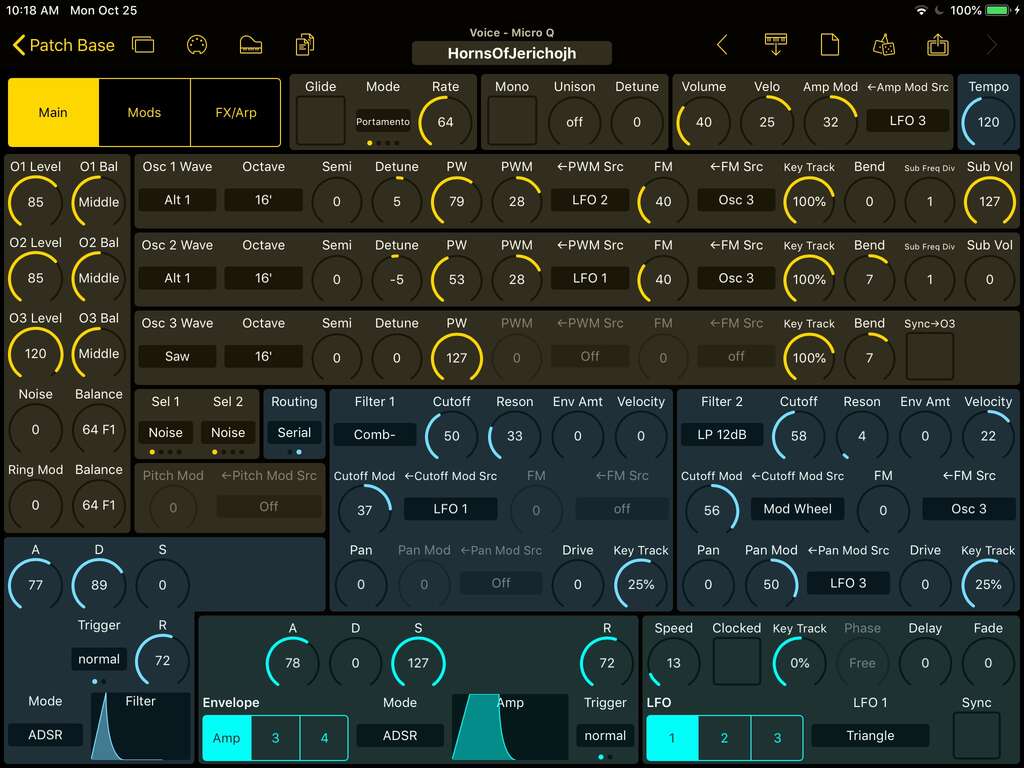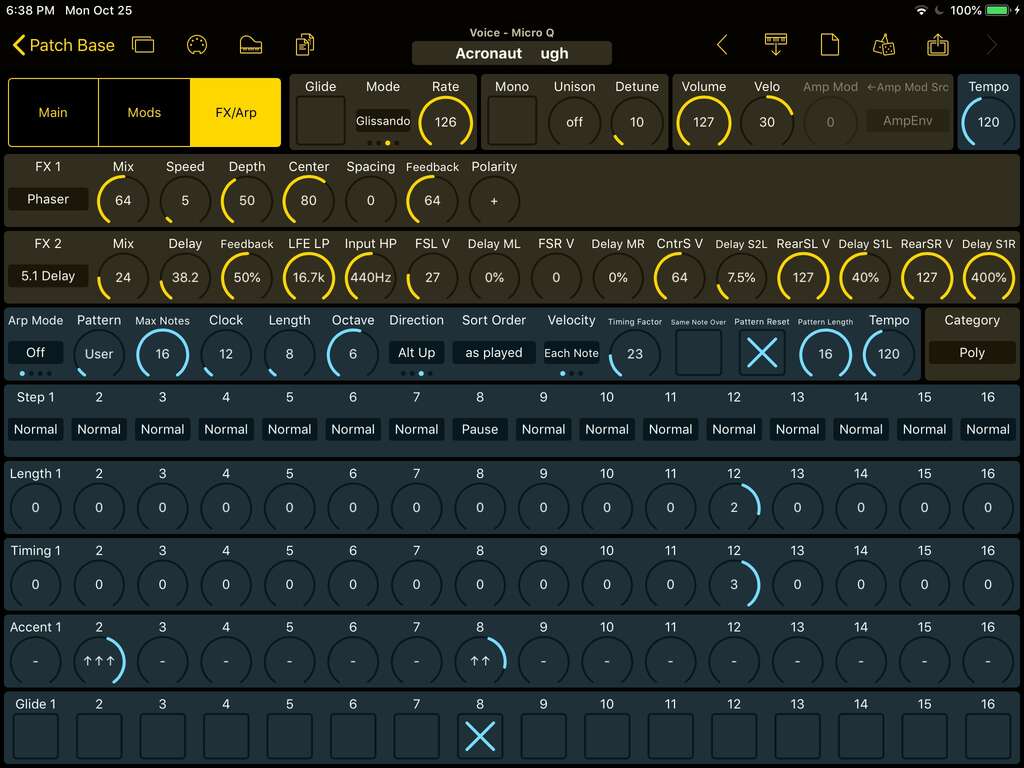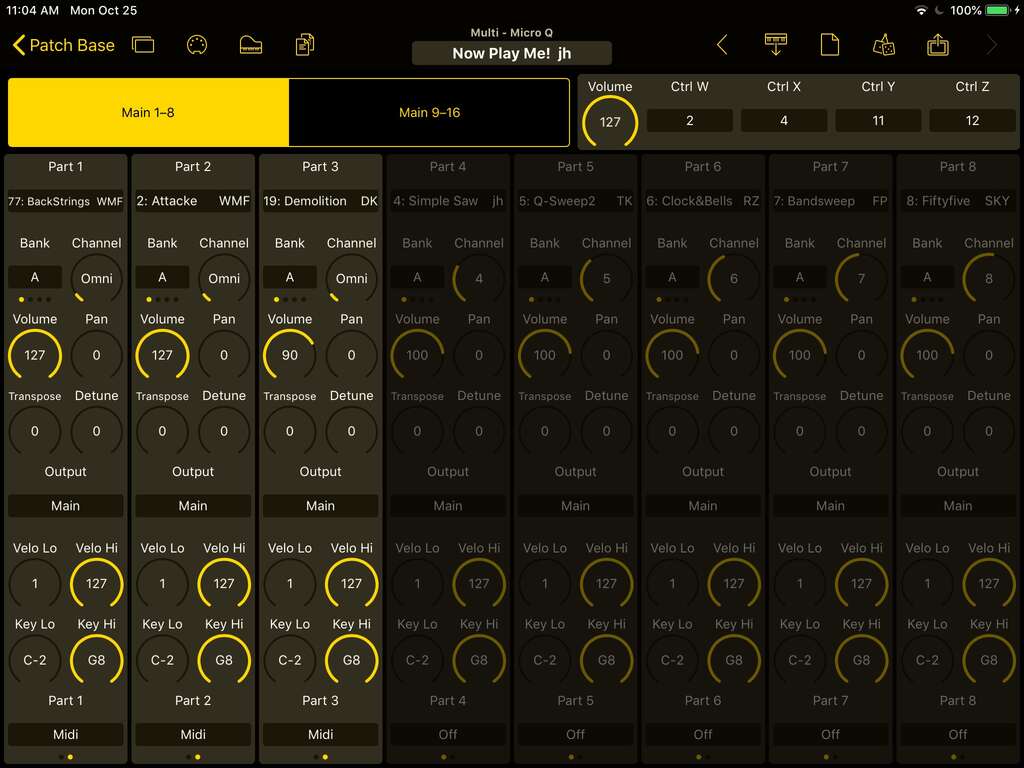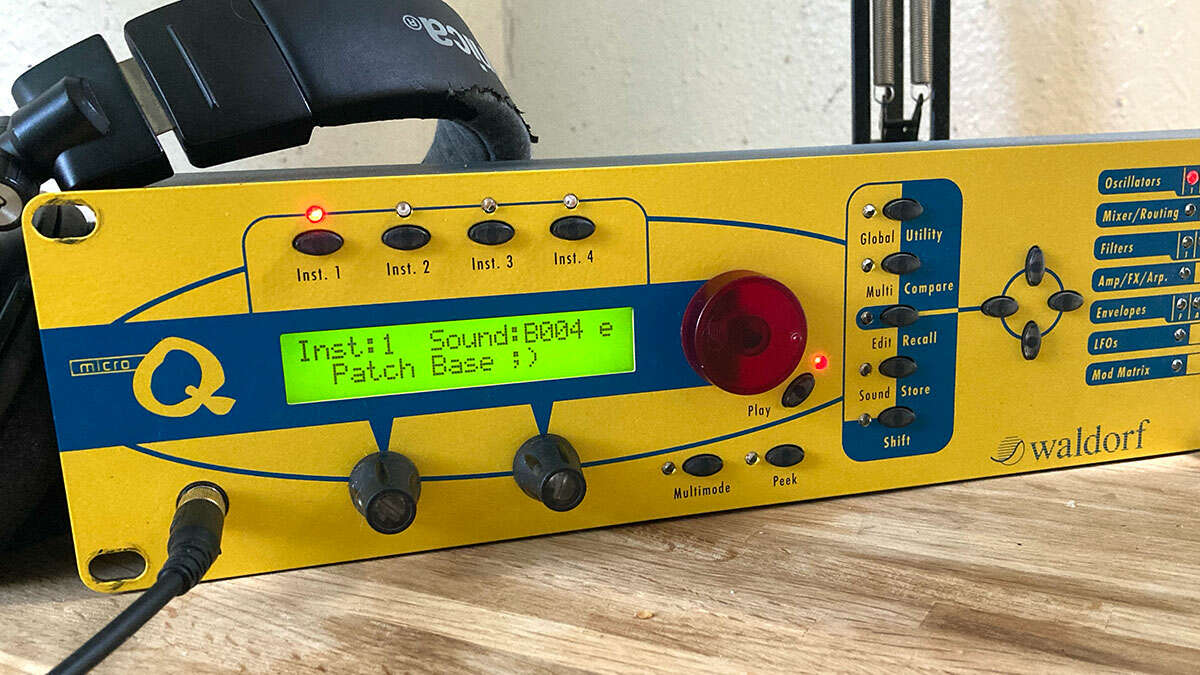Waldorf Micro Q Editor/Librarian now in Patch Base
by Chadwick Wood
January 6th, 2022
Patch Base for Mac (v1.17) and iPad (v3.23) now include editors and librarians for the Waldorf Micro Q, a virtual analog polysynth released in the year 2000. The Micro Q is very similar in architecture to the later-released Blofeld, one of the first synths that was supported in Patch Base. As previously with the Korg Prophecy and DSI Tetra, the synth I used for development (and pictured here) was loaned to me by Jesús Navarro! He's hooking the Patch Base community up.
The Micro Q has a lot going on. It's got 3 lovely oscillators capable of all the standard waveforms, but the first 2 of them also support built in wavetables! Each oscillator can also be Frequency Modulated from a variety of sources, allowing for feedback networks of FM synthesis that even most Yamaha FM synths can't do.
The two filters support an array of different modes, including Comb modes, allowing for physical modeling-type synthesis of strings and tubes, which again is a rare find in a hardware synth.
You also get 4 envelopes, 3 LFOs, 16 modulation routings, and 4 Modifier sources (to combine other sources in new ways for modulation). Add to that 2 effects units and a customizable arpeggiator, and you have an enormous amount of sonic flexibility in this little rack unit.
But that's just the synth itself, and all of this power is locked behind a small handful of knobs on the unit. To really explore the Micro Q, a good editor helps, and that's where Patch Base comes in! Below you can see a breakdown of the different parts of the editor.
Voice Editor
The Main page of the Voice Editor shows the most important stuff. You can see all 3 oscialltors and both filters, the mixing controls, and the Filter and Amp envelopes at the same time. You can also tab between the other envelopes and all 3 LFOs, to do all of your main voice design on one page.

The Mods page is where you can see all 16 modulation routings at once, as well as all 4 modifiers, which can be used as custom sources for your modulations. The Envelopes and LFOs are again shown at the bottom of this page, since those are often what you're using for your modulation sources, so you might want to tweak them here.
Unused mod matrix slots are dimmed, to reduce visual clutter when you're designing a sound.

The FX/Arp page finishes out the voice editor. Both Effects units are fully supported with all of their different parameters available for easy configuration. Chorus, Flanger, Phaser, Overdrive, Five FX, Vocoder, Delay, Reverb, 5.1 Delay and 5.1 Clocked Delay are all easy to play with, with all of their custom parameter ranges faithfully shown.
And, visualize the entire Arpeggiator and User pattern on this page as well to create custom arp sequences for your sounds.

Multi Editor
The Micro Q can play up to 16 different parts at the same time in Multi Mode. The Multi Editor is where you can control these multi-timbral setups. Choose the sounds you want to use, mix them, set up key and velocity splits, and more.

Also, you can directly edit all 16 sounds loaded in Multi Mode. Patch Base has 16 separate voice editors, 1 for each part, allowing you to easily switch between parts when you need to make small tweaks (or big changes!) to any of the sounds in a Multi.
Drum Map Editor
Similar to the Multi editor, the Drum Map editor enables customization of Drum sets of 32 different sounds from your Micro Q. Select the sounds you want to use, and mix and transpose them. The editor includes a 32-button grid at the top to audition any of your sounds while you're creating your kit. And the custom Effects and Arp settings for your Drum Maps are also directly editable here.

Bank Editor
The Micro Q has 3 internal voice banks, for a total of 300 sounds that can be stored on the synth. Patch Base's Bank Editor enables you to add new sounds, rearrange the locations of sounds, and backup and load banks of 100 sounds at a time. The Micro Q's 100 Multis and 32 Drum Maps can also be managed directly in Patch Base.
- More info on the Micro Q editor
- More information about Patch Base
